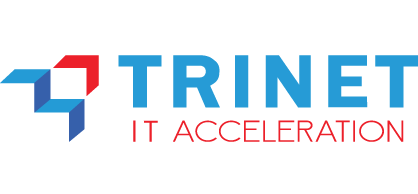Tech Innovation > Software > Enhancing Your Software Quality: A Comprehensive Approach to Automated Testing

Enhancing Your Software Quality: A Comprehensive Approach to Automated Testing
Without this solution, organizations face the following challenges:
Higher Bug Risks
Undetected defects lead to software failures, security vulnerabilities, and poor user experience.
Increased Testing Time
Manual testing slows development cycles, delaying product releases and updates.
Compliance Challenges
Lack of automated testing makes meeting industry standards and regulations more difficult.

Key Features & Capabilities
Software Testing ensures secure code quality and tracks testing progress efficiently.
Show Details
a. Static Code Analysis
Identifies potential vulnerabilities and coding errors early in the development process.
b. Unit Testing
Automates the testing of individual code units to ensure functionality and reliability.
c. API Testing
Validates the performance and functionality of APIs to ensure seamless integration.
d. Regression Testing
Automates re-testing of existing functionalities to detect issues after code changes.
e. Continuous Integration/Continuous Delivery (CI/CD) Support
Integrates with CI/CD pipelines to enable faster and more reliable software delivery.
f. Comprehensive Reporting and Analytics
Provides detailed insights into code quality, test coverage, and defect tracking.
g. Cross-Platform Compatibility
Works seamlessly across various development environments and programming languages.
h. Customizable Test Scenarios
Allows users to create and configure test cases tailored to specific project requirements.
i. Real-Time Feedback
Offers instant feedback on code changes to accelerate the debugging process.
j. Compliance with Industry Standards
Ensures adherence to security and quality standards, such as MISRA, ISO 26262, and others.

Business Benefits
Software Testing enhances code quality, reduces risks, and boosts software compliance.
Show Details
a. Early Defect Detection
By identifying issues early in the development cycle, the solution reduces the cost and effort required to fix defects later in production, where errors are significantly more expensive to resolve.
b. Automation of Repetitive Tasks
Automated testing eliminates the need for manual testing of repetitive scenarios, saving time and reducing human error, which translates to lower labor costs and faster delivery.
c. Reduced Maintenance Costs
With features like static code analysis and regression testing, the solution ensures cleaner, more maintainable code, reducing long-term maintenance expenses.
d. Improved Resource Utilization
By streamlining testing processes and integrating with CI/CD pipelines, teams can focus on higher-value tasks, optimizing resource allocation and improving overall productivity.
e. Scalability
The solution is designed to handle projects of all sizes, from small teams to large enterprises, ensuring cost-effectiveness regardless of the scale of operations.
f. Comprehensive Reporting
Detailed analytics and reporting help teams prioritize issues effectively, avoiding unnecessary work and focusing on critical areas that impact quality.
g. Reusability of Test Cases
Test cases can be reused across different projects or iterations, reducing the need to create new tests from scratch and saving both time and effort.
h. Faster Time-to-Market
By enabling continuous testing and integration, the solution accelerates the development process, allowing businesses to release products faster and gain a competitive edge.
i. Compliance and Risk Mitigation
Ensuring adherence to industry standards minimizes the risk of costly legal or regulatory issues, protecting the organization from potential fines or reputational damage.
j. Lower Infrastructure Costs
The solution’s ability to integrate with existing tools and environments reduces the need for additional infrastructure investments, making it a cost-efficient choice.

Use Cases
Software Testing provides effective solutions for securing applications, enhancing reliability across industries.
Show Details
a. Banking Industry
A bank uses this solution to automate testing for their mobile banking application. With regression testing and API testing features, they ensure that every app update does not disrupt existing functionalities. This helps the bank reduce the risk of downtime and improve customer satisfaction.
b. Automotive Industry
A car manufacturer integrates this solution into their vehicle software development process. With static code analysis and unit testing, they ensure that vehicle control systems comply with safety standards like ISO 26262, reducing the risk of software defects that could lead to costly recalls.
c. E-commerce
An e-commerce platform uses this solution to test their payment and inventory systems. With automated testing, they can ensure smooth transactions during high-traffic periods, such as major shopping holidays, avoiding losses due to system failures.
d. Healthcare
A hospital implements this solution to test their electronic medical record (EMR) system. With API testing and continuous integration, they ensure that patient data is always accurate and accessible, improving system reliability and compliance with healthcare regulations.
e. Telecommunications
A telecommunications company uses this solution to test their customer-facing applications. With automated testing and comprehensive reporting, they can quickly identify and fix bugs, enhancing user experience and reducing customer support costs.

How It Works
Our Software Testing solution ensures quality through thorough and efficient testing processes.
Show Details
a. Requirement Analysis & Test Planning
- First, we understand the business requirements and objectives for the software being developed.
- Based on this, we create a detailed test plan that outlines the testing scope, objectives, resources, and timelines.
b. Test Case Design & Preparation
- Test cases are designed based on the functional and non-functional requirements of the application.
- Test cases are prepared to validate all possible scenarios, edge cases, and user flows within the software.
c. Test Execution & Bug Identification
- The software is tested in real-world environments, ensuring all functionalities work as expected.
- Automated and manual testing processes are used to identify and report bugs, vulnerabilities, or performance issues.
d. Issue Reporting & Feedback
- Once the issues are identified, they are reported with clear details, including severity and steps to reproduce.
- The development team receives feedback to address the issues, and the process is repeated to ensure quality.
e. Regression Testing & Validation
- Once the fixes are made, regression testing is performed to ensure no new issues have been introduced.
- Validation is done to ensure all critical functionality works properly after updates or fixes.
f. Final Reporting & Test Closure
- A comprehensive test report is generated, detailing all tests performed, issues found, and their resolutions.
- Once the application meets all quality standards, the testing phase is closed, and the software is ready for deployment.
Contact our experts for further information












